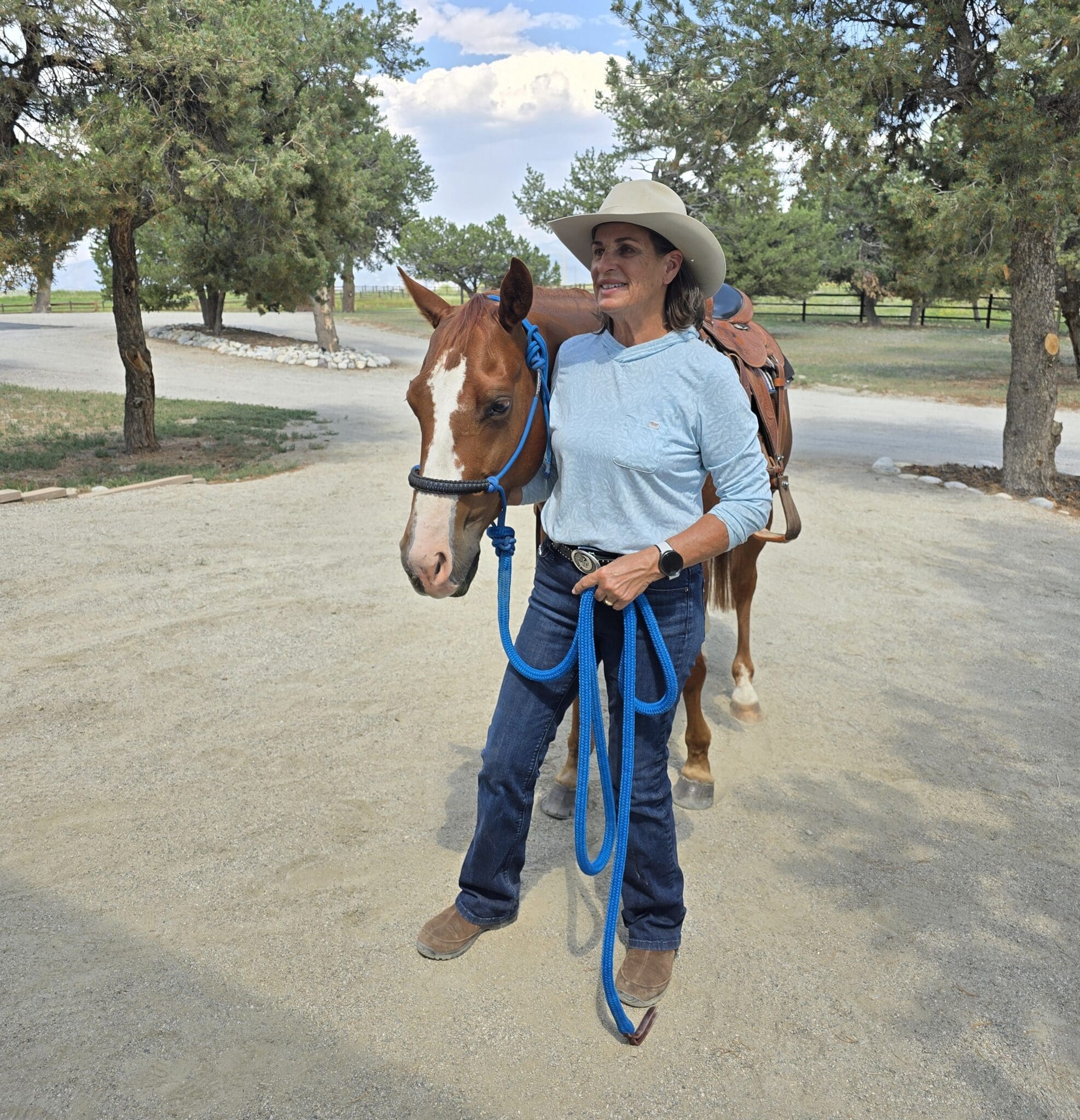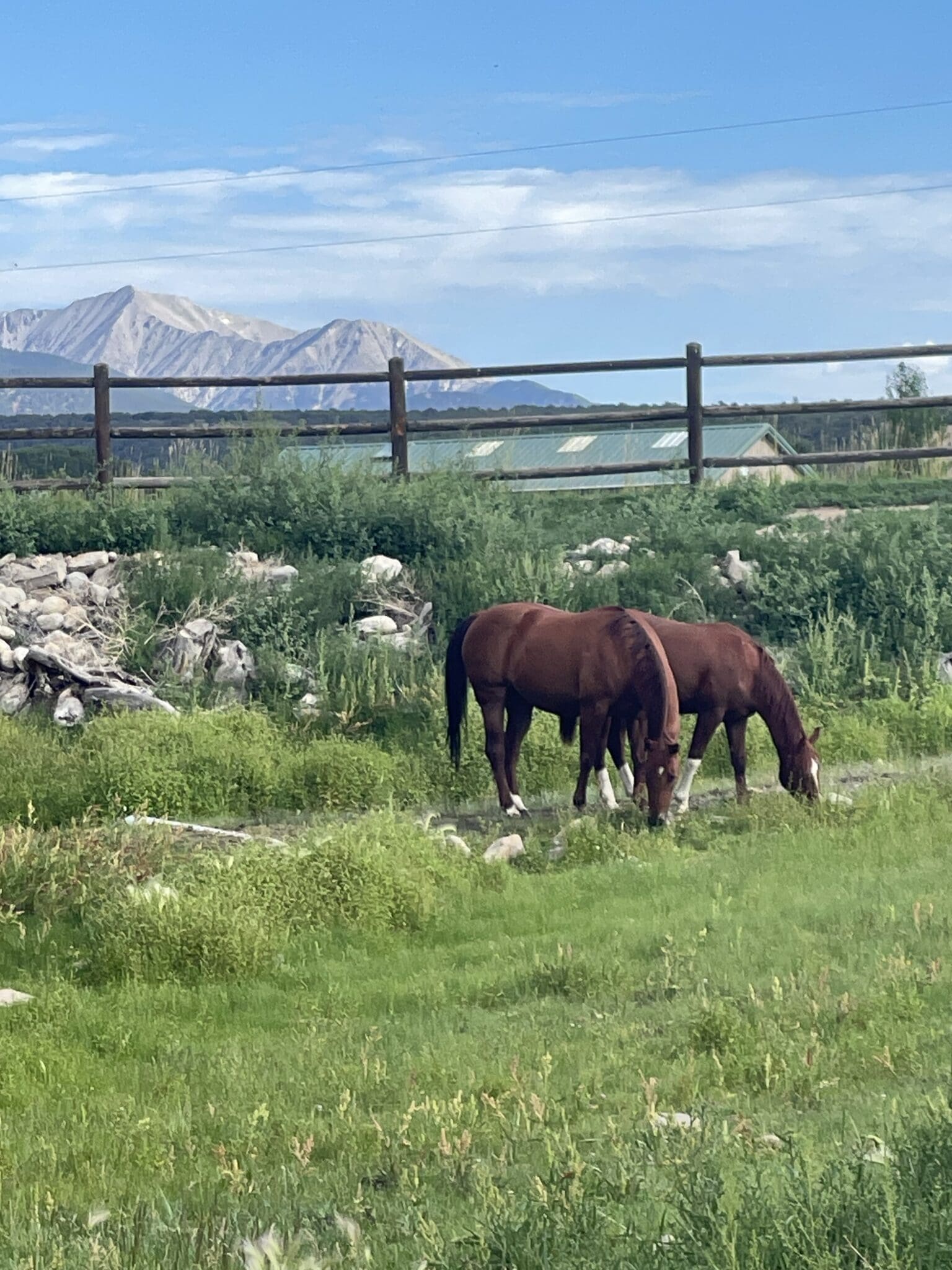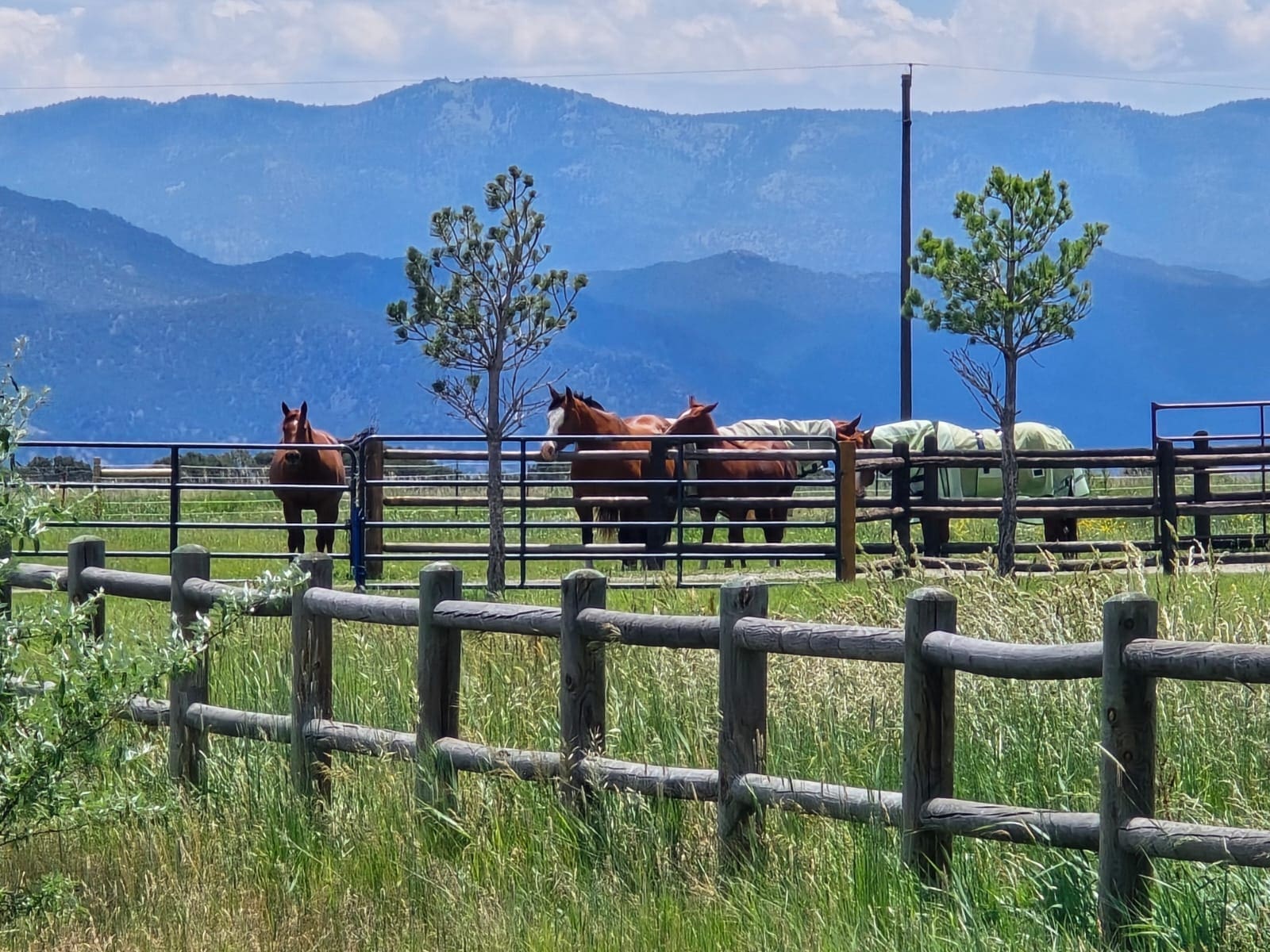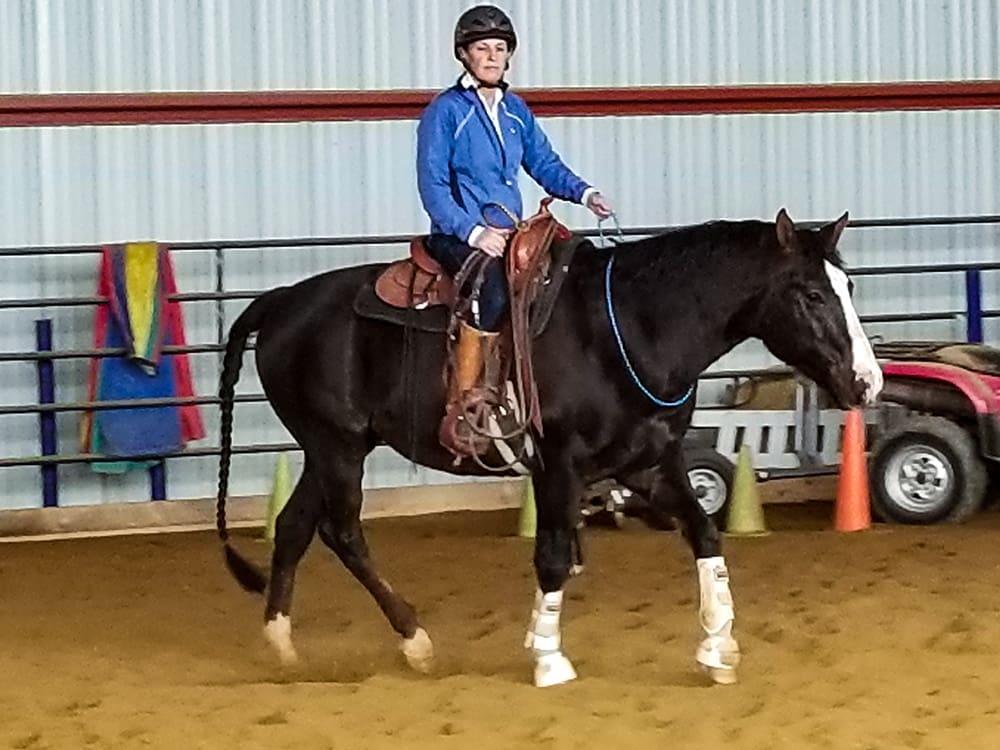Julie Goodnight Q&A
Q: How do I get my horse to move out at the trot without breaking into a lope? He’s a western horse learning dressage and the extended trot is part of the pattern we are working on. — Jen Vieira via Facebook
A: Horses differ in their physical abilities. Remember that a horse can only extend the trot as much as his physical conformation and athleticism allows him. How far the horse will extend differs with each horse. You’ll need to find out how much you can extend the gait. You’ll push him to the limit of what he can do to extend then you’ll need to back off on your cues and not ask him for more than that. You’ll only find out how far your horse can extend if you push him to the point that he feels the need to canter. In that process, you’ll find the defining moment. When he does start to canter clarify with a half halt (a momentary application of all the aids to rebalance the horse) then immediately go back to the trot. Ask for the extended trot once again.
What’s the cue for the extended gait? To ask the horse to move into an extended trot, start from the slow sitting trot. Reach forward with both hands to give the horse somewhere to go. Your center of gravity comes slightly forward as your legs move back and close on the horse’s sides. Move into a posting trot to drive him forward with your seat. You’ll be pushing as you rise in the trot and as you sit, your legs will close on his sides to ask him for more impulsion. As you reach forward and drive him on, he’ll extend. It’s your job as a rider to find out how much you can extend the trot gait without cantering.
Keep in mind that all training occurs in transitions. Once you find out how much you can extend the trot, alternate between a slow sitting trot and an extended posting trot. Over time, you’ll ask him to hold the extended trot for longer and longer—conditioning him to hold the new gait.
Be sure to use the entire arena. It will be easiest for your horse to move out on the long sides and diagonal lines of the arena. Practice your extended trot on the long lines of the arena then move to a slow sitting trot as you round the corners of the arena.
Q: I’d like to work my new gelding in the round pen and have him focused on me. Instead, when I turn him loose, he begins trotting or cantering around quickly before I even give a command. Why does he do this and how can I help him slow down and tune in? –Tammy Buffing, via email
When it comes to horses that are speedy or downright out of control in the round pen, there are two common reasons for the behavior. Either the horse doesn’t want to be there and is herd bound—he looks outside, kicks out and carries on to show you that he really wants to get back to his herd. It’s also possible that before you got this horse, someone inadvertently trained him to run. Some people think round pen work is simply a time to run a horse around in circles– to wear him out before riding. But the truth is, there is a lot more to round pen work than that. In that scenario, the horse may learn to run around in circles as soon as he’s turned loose. He thinks that’s what he’s supposed to do.
Either way, you have a horse that is not paying attention to you and probably has no regard for you. . First in the round pen, I want to control the horse’s direction and speed. To control the horse’s movements, you need to understand the horse’s driveline. Imagine a plumb line down from the horse’s withers. If you look or step in front of that vertical line, you cue the horse to stop and or turn around (because you are blocking his path). If you aim your eyes or body behind that line, you’re pushing the horse forward. You use your position to either drive the horse forward or cut off his direction..
Use caution, the round pen can be a pressure cooker for the horse. You have him confined, but you’re chasing him as if he was out in the open. That can cause a horse to be emotional, to kick out, to try to jump out of the pen, or to simply feel uncomfortable until he understands what you’re asking for and accepts your authority. Be careful; it’s easy get kicked or run over in the round pen.
Any time you’re in the round pen, make sure to have a flag or stick with you to help you pronounce your cues and to defend your space. If you’re working a horse in the round pen, it’s probably because you need to get his attention and establish that you are in charge. The flag will help you get your horse’s attention and if he disagrees with your leadership, it’s possible he could charge you; make sure you have a tool to defend your space if needed.
I like a flag so that I can wave it and I have a way to signal the horse visually without touching him. If the horse were to become aggressive, having the attached stick helps me defend my space. I have been charged in the round pen by a several horses. Sometimes it is predictable, sometimes not. You can’t predict how a horse will react when he is learning to follow your round pen cues. Kicking and charging are normal horse behaviors and you need to be prepared.
Your speedy horse is probably looking anywhere but at you. To slow a speedy horse, you’ll need to change his direction a lot. And to change his direction, you’ll need to visually block his way and get him to notice you. You’ll need to cut him off and send him in the opposite direction. You can’t just step directly in front of him or he may run you over. Plan ahead and visualize where the horse will be when he continues three quarters of the way around the pen. Then walk to that point of intersection. That gives him plenty of time to see you and stop and turn.
If you start turning the horse around every time you lose his attention, he will start thinking about you more. Turning around is extremely difficult. When the horse turns into the fence, he has to stop abruptly, roll back onto his haunches and launch forward—that uses lots of energy. If you turn him and after a few strides he starts going too fast again, turn him around again. Soon, he’ll get tired of turning. He’ll start to focus on you to see when he’ll have to turn around again. If he seems tired, see if he’ll stop instead of stop and turn.
If he’ll stop, I’ll walk to the fence that is away from the horse and talk to a friend. If your friend is close enough to watch, it’s interesting to hear about what the horse does as your back is turned. As long as he’s looking at you, allow him to stay still and rest. If your friend reports that he has looked away, put him back to work.
As soon as he looks outside the pen or speeds up, turn him around. You’ll see results in the first session. If he starts benefitting from looking at you—by being allowed to slow down or to stop and rest—he’ll give you his attention for longer and longer periods.
There’s a whole lot more to round pen work than a casual observer would ever see or understand. There’s so much communication and purpose in this complicated work. There are specific steps to take in the round pen—first drive the horse away, then control direction, then control speed. Even people who own horses don’t always realize how much is going on and may think that a round pen is just a place to chase a horse around to wear him out before a ride. Make sure to study the body language of horses and to learn all the ways you can communicate with your horse in this setting. If done correctly, the round pen can be a place where you establish your leadership and show the horse great rewards for listening and seeing your cues.
–Julie Goodnight
JulieGoodnight.com



